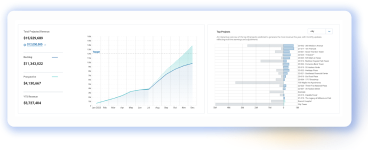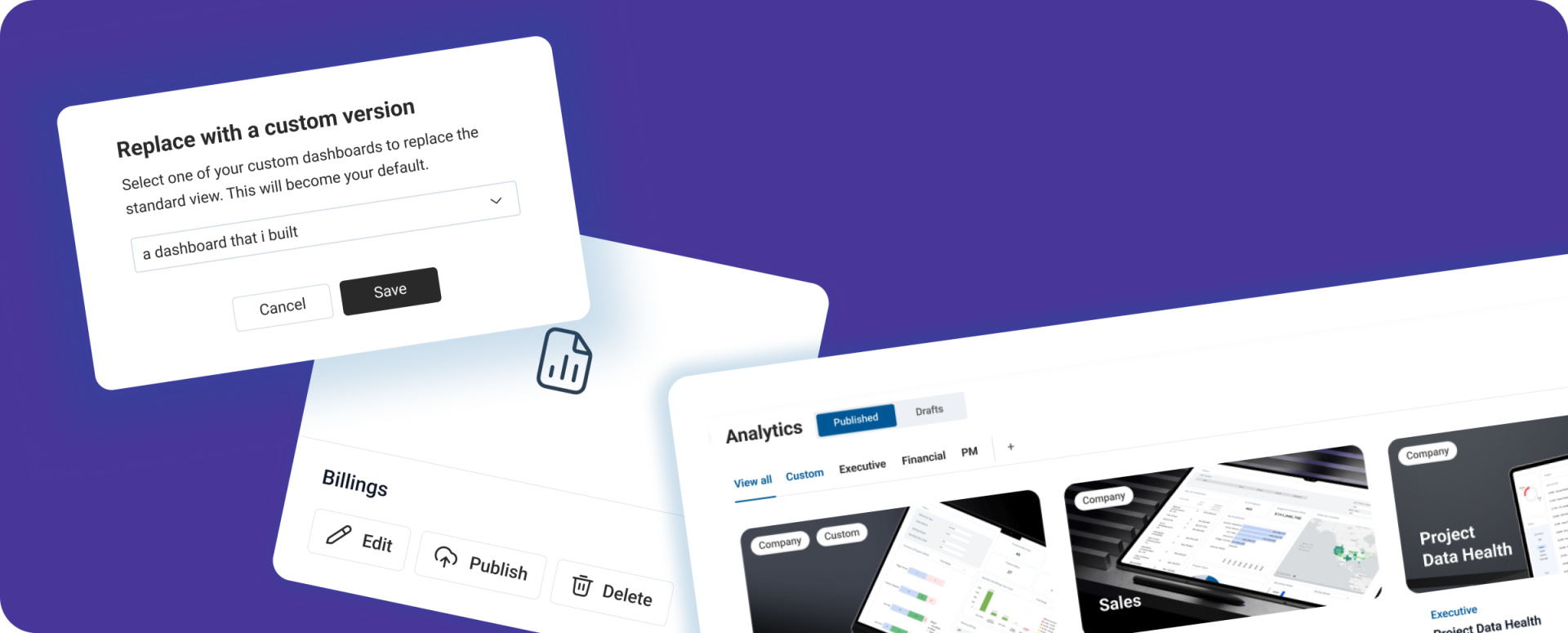In the dynamic landscape of the construction industry, attention to detail is paramount, extending far beyond blueprints and timelines to include the fiscal health of a business. A pivotal component of this financial wellbeing lies in the vigilant monitoring of construction profit margins. Despite their utmost importance, profit margins can sometimes be easily overlooked or misunderstood. This article elucidates the reasons why construction companies must prioritize the tracking of their project profit margins to ensure financial success, make informed decisions, and drive profitability.
Published August 29, 2023 . 4 mins read
The Essential Role of Profit Margin Monitoring in the Construction Industry
Business
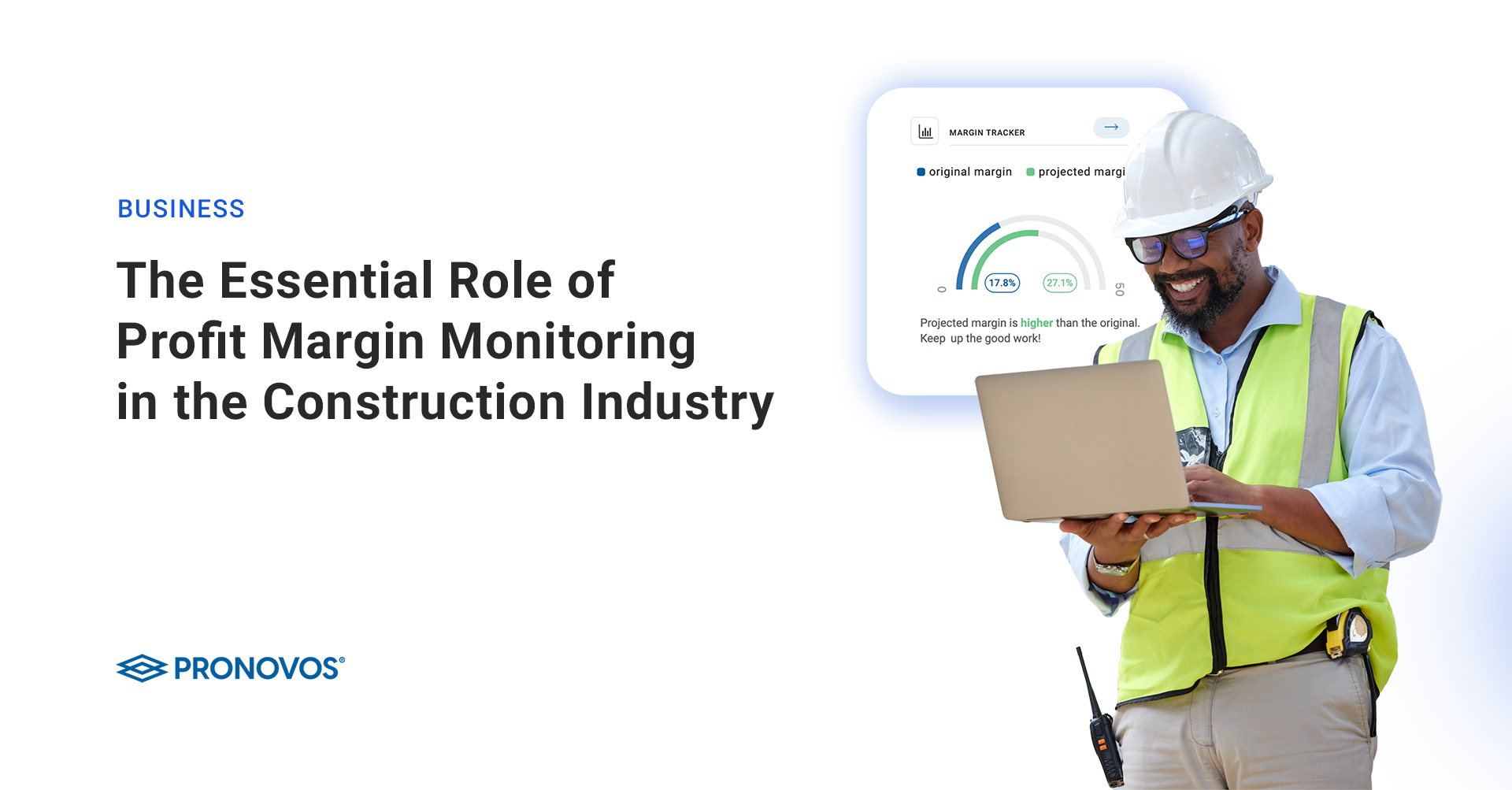
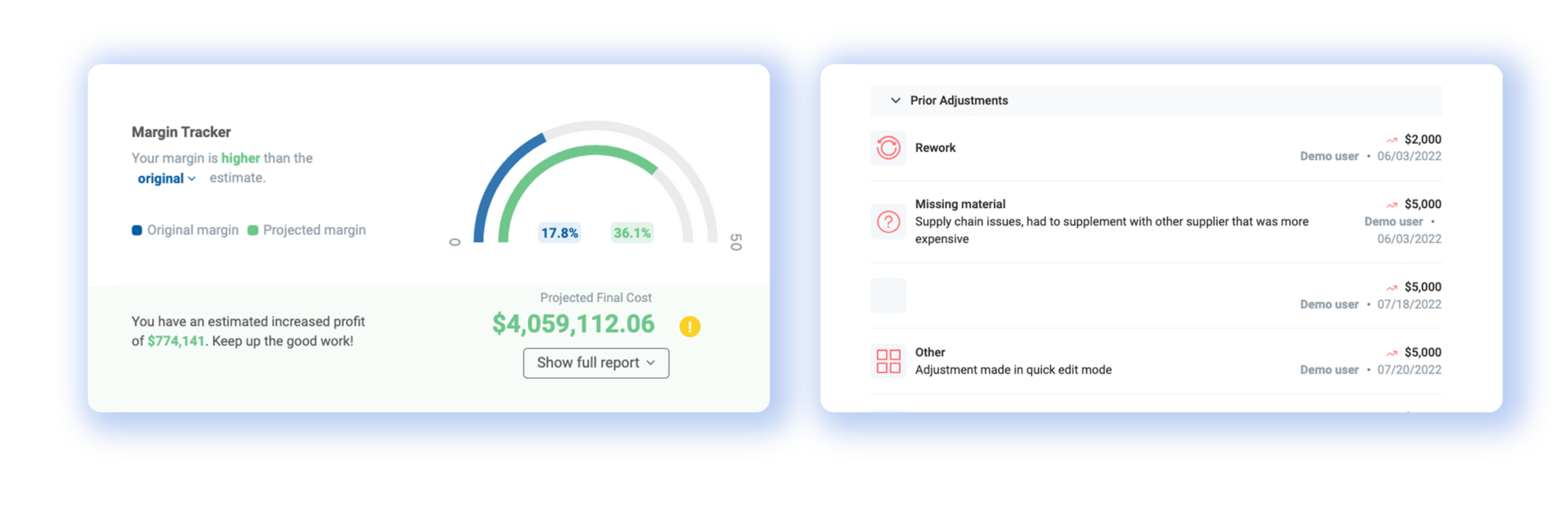
What is Profit Fade/Erosion?
Monitoring profit margins is not a one-off activity; it’s an ongoing process that involves the scrutiny of the original profit margin and the projected final profit margin. This scrutiny, supported by accurate project forecasts, allows for the evaluation of the profit margin fade or gain — the difference between the two margins. This delta is a robust measure of project performance.
Profit fade is what happens when profits on a construction project gradually decrease over time as the project progresses and the job closes with lower gross profits than what was originally estimated. It not only undermines the financial performance of a construction business but can raise red flags with sureties and money lenders. If profit fade occurs consistently, underwriters can lose confidence in the contractor’s ability to estimate and in turn lead to lower bonding capacity and denial of credit lines.
Although profit margin gain is desirable over a fade, an excessive gain can raise red flags. An unusually large profit margin gain might suggest a lucky break with project costs or, more concerning, an indication of pricing yourself out of projects you could have won.
Avoiding the post-mortem approach
Projects run on a tight deadline with a complex variety of moving parts from materials to labor so gathering timely information can be a challenge. By consistently generating monthly, if not weekly (or even daily), reports through an accessible and real-time data-driven reporting tool, project teams can shift from reacting to problems after they occur to proactively identifying and addressing issues before they escalate.
This proactive approach allows for prompt corrective action on contracts with growing red numbers, fostering better collaboration among all project stakeholders. With up-to-date information in everyone’s fingertips, teams can communicate effectively and efficiently, making informed decisions to avoid potential pitfalls and ensure project success.

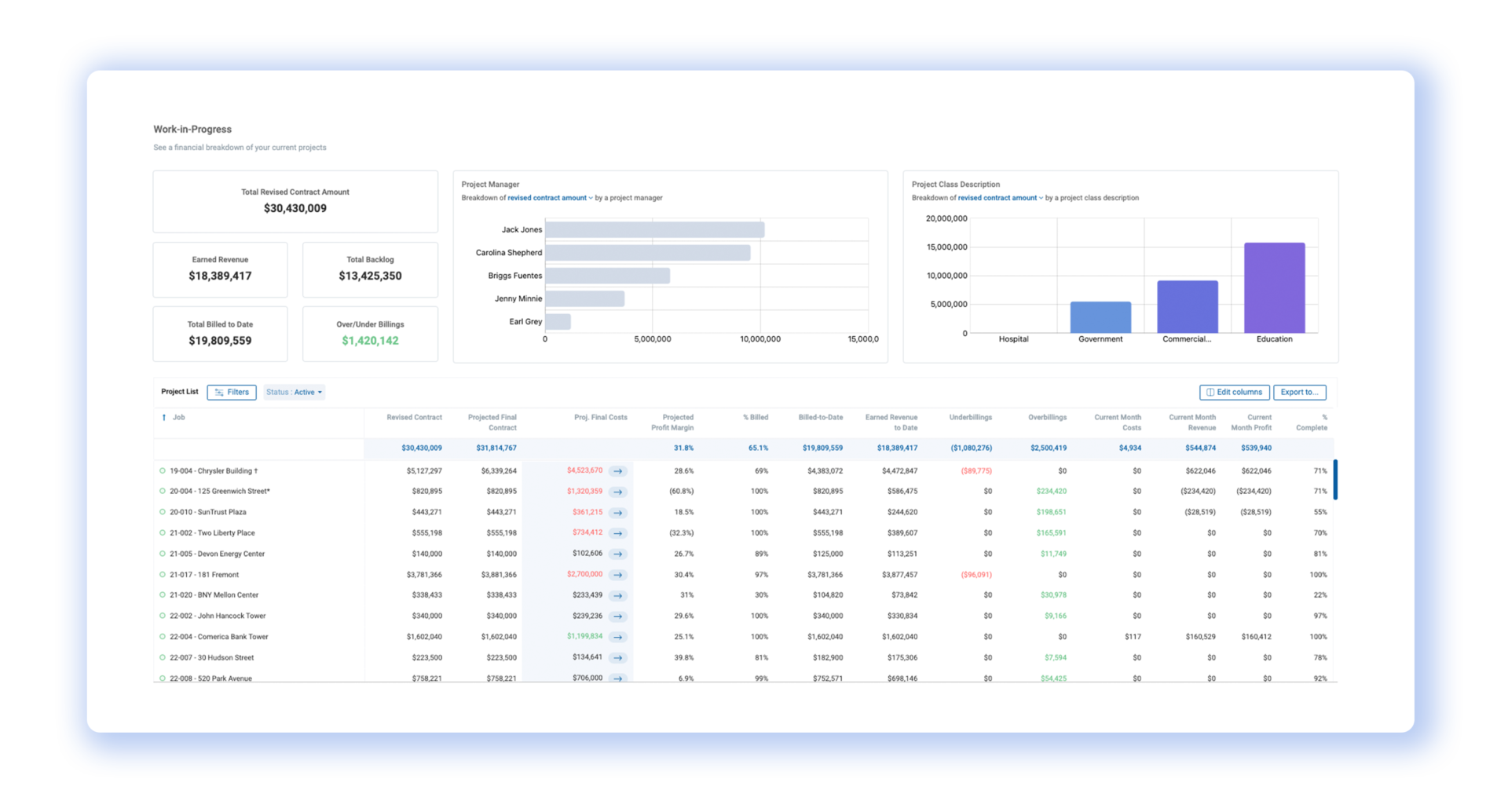
Profit Margins: The Financial Litmus Test
A thorough understanding of profit margins forms the cornerstone of successful financial management. Essentially, a profit margin denotes the profit a company accrues per dollar of project revenue. The calculation is straightforward: (Revenue – Costs) ÷ Revenue. This simple ratio holds powerful insights about the monetary return of a project, providing a clear snapshot of success and performance.
Aligning Expectations with Realities
One of the chief reasons to monitor profit margins is to juxtapose budgeted performance against actual outcomes. This alignment is instrumental in distilling valuable insights. For instance:
- Identifying which types of projects deliver the highest returns,
- pinpointing the most profitable clients and project types,
- and distinguishing the most efficient project managers.
The assimilation of this information can propel strategic decision-making, such as pinpointing promising projects and lucrative partnerships.
Markup vs. Margin: Clearing the Confusion
Profit margins monitoring hinges on the understanding of the distinction between markup and margin. While markup pertains to the profit earned on costs, margin refers to the profit earned per dollar of revenue. Confusing the two could lead to incorrect financial calculations and, consequently, profit margin erosion, particularly when processing change orders. It is therefore pivotal to grasp this subtle yet crucial differentiation to maintain healthy profit margins.
Tips for Success:
- Automate data workflows from the ERP source
- Get a handle on job costs
- Learn from your completed jobs
- Monitor the Work-in-Progress
- Budget for success
- Build protections into your contracts
Guiding the Path to Sustainable Success
The regular monitoring and understanding of project profit margins pave the way for well-informed, strategic decisions, ultimately fostering successful and sustainable project execution. A consistent profit margin reflects proficient project management, precise cost estimations, and streamlined operations – all indicative of an organization’s competency and reliability, fundamental to securing more business in a competitive market.
To summarize, the practice of vigilantly monitoring project profit margins transcends the realm of a smart business strategy. It serves as a roadmap guiding your construction company towards current project excellence and future growth opportunities. After all, within those seemingly simple percentages lie the secrets to realizing your company’s fullest potential.
